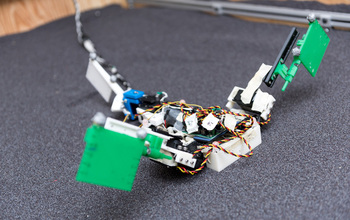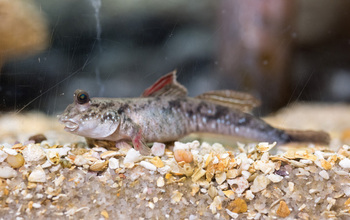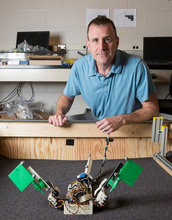All Images
News Release 16-082
Recreating ancient vertebrate's first step on dry land
Researchers use robot, mathematical models and studies of amphibious fish to explore critical evolutionary leap
This material is available primarily for archival purposes. Telephone numbers or other contact information may be out of date; please see current contact information at media contacts.

Image shows the "MuddyBot" robot that uses the locomotion principles of the mudskipper to move through a trackway filled with granular materials. The robot has two limbs and a powerful tail, with motion provided by electric motors.
Credit: Rob Felt, Georgia Tech
Download the high-resolution JPG version of the image. (1.8 MB)
Use your mouse to right-click (Mac users may need to Ctrl-click) the link above and choose the option that will save the file or target to your computer.
When early terrestrial animals began moving about on mud and sand 360 million years ago, the powerful tails they used as fish may have been more important than scientists previously realized. That's one conclusion from a new study of African mudskipper fish and a robotic model inspired by the animal. Animals analogous to the mudskipper would have used modified fins to move around on flat surfaces, but for climbing sandy slopes, the animals needed to use their tails to propel themselves forward, the researchers found.
Credit: Georgia Institute of Technology, Clemson University, Carnegie Mellon University

Researchers study the motion of mudskippers to understand how early terrestrial animals might have moved about on mud and sand. This animal was photographed at the Georgia Aquarium in Atlanta.
Credit: Rob Felt, Georgia Tech
Download the high-resolution JPG version of the image. (2.3 MB)
Use your mouse to right-click (Mac users may need to Ctrl-click) the link above and choose the option that will save the file or target to your computer.

Georgia Tech Associate Professor Dan Goldman with the MuddyBot robot in the trackway where its motion was studied.
Credit: John Toon, Georgia Tech


